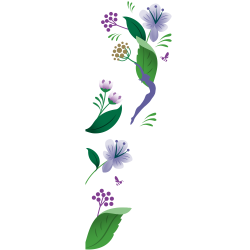

A guide to Ayurvedic exercise
The Ayurvedic perspective
According to the NHS, regular exercise can reduce the risk of the onset of major illnesses such as stroke, heart disease, obesity, type 2 diabetes and cancer by 50% and lower the risk of an early-onset death by 30%. There's also research showing clear links between improvements in mental as well as physical health such as self-esteem, mood, sleep quality and energy.
So, what exercise is best for you? Ayurveda, the Indian system of herbal medicine, may have the answer.
In Ayurveda, there are three different body types or constitutions known as ‘dosha’: Kapha Pitta and Vata. Each dosha will have certain characteristics and body types. Try out our dosha quiz and find out which one you are.
Here is a little insight into what types of exercise are most suited to each dosha.
Kapha types really benefit from getting a sweat on. They are able to sustain longer periods of metabolic activity as they have excellent stamina. They might find exercises such as swimming, trampolining, skipping or hula-hooping fun.
Pitta types are the natural athletes and are often found challenging themselves and pushing themselves to the limit. But they can get bored easily, and so benefit from fun and creative exercise.
Vata types often have thin and delicate body frames and benefit from strengthening and balancing exercises such as yoga or brisk walking.
As well as physical exercise, it's also important for all dosha types to consider mental exercise too. Meditative practice and breathing exercises help to calm the mind and improve oxygen supply to the brain. And it's very important to take time out of our busy lifestyles to focus on our mental health.
Strains and sprains: how herbs can help
We've all been party to the odd strain or sprain. Prolonged pressure and strain on the muscles, joints and skeletal system can result in inflammation, pain and swelling, negatively impacting upon mobility and capability. This is where herbs can really help.
One really easy way to help heal muscles and joints is to massage the area with stimulating and heating oils such as turmeric and ginger; helping increase circulation to the affected area and reduce the build up of inflammation. Try our Pukka , containing 35 wonderfully-fragrant and stimulating herbs.
Pukka's Turmeric Active is a great formula to support everyday mobility and flexibility and for use after sporting activities. This tailored blend of 12 botanicals including boswellia, ginger and our is designed to maximise the benefits to the body during sporting activity and to support ease of movement.


Author: Jo Webber
Head of Herbal Education
As a B.Sc. qualified Ayurvedic practitioner and yoga teacher, Jo is passionate about bringing these two ancient sciences together to help people feel empowered about their health. Jo has put her post-graduate certificate in education to good use, co-founding the Ayurveda academy to help others learn of the wonders of Ayurveda. Jo has also earned a Masters degree in human sciences from Oxford University and has taught in several schools
Qualifications:
B.Sc. qualified Ayurvedic practitioner and yoga teacher
Years of experience:
20 years as a Hatha yoga teacher/ayurvedic practitioner
Professional Registrations:
Member of the Ayurvedic Practitioners Association

